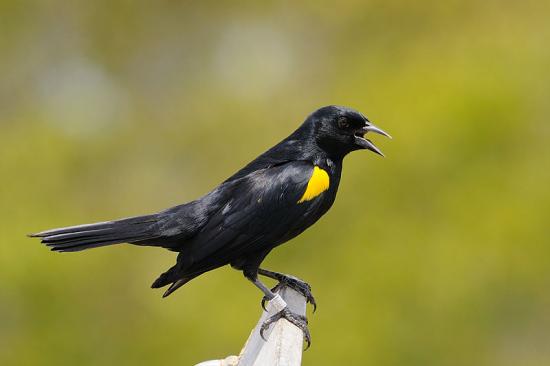Yellow-Shouldered Blackbird (Agelaius xanthomus)

About the Species
In Puerto Rico, the yellow-shouldered blackbird population has declined by more than 50% since 2004. Fewer than 400 birds remain in their native mangrove habitat. Their troubles stem from the encroachment of the shiny cowbird (Molothrus bonariensis), an invasive species originally native to South America.
Cowbirds, known as "brood parasites," lay their eggs in the nests of other birds and leave the host species, like yellow-shouldered blackbirds, with the task of raising cowbird young in addition to their own. Because cowbirds can lay up to 90 eggs per year, overcrowded nests cause abandonment by overwhelmed blackbirds and subsequent death of chicks.
CBSG’s role
The United States Department of Agriculture, US Fish and Wildlife Service, and the Puerto Rico Department of Natural Resources invited CBSG to conduct a population and habitat viability assessment (PHVA) workshop to help guide yellow-shouldered blackbird recovery efforts. PHVA workshops combine rigorous scientific analysis for conservation planning with innovative methods for helping people organize and evaluate information across a broad range of disciplines and perspectives.
Population models are often created for a single species. However, this situation—shiny cowbird reproductive behavior adversely affecting yellow-shouldered blackbirds—posed a unique challenge for CBSG modelers to model two species instead of just one.
Enter metamodeling: a revolutionary new set of modeling tools that link together multiple models of specific biological processes. For this PHVA, metamodeling was used to link together single-species computer simulation models and create an explicit two-species model. This project is the first test-case for using metamodeling as a tool to improve conservation planning for an endangered species impacted by an invasive species.
The Results
The metamodel allowed an evaluation of cowbird management in relation to yellow-shouldered blackbird management, simulating how different management techniques would affect populations of both birds. Management actions were identified to improve blackbird reproductive success, reduce mortality, and reduce the impact of cowbirds. PHVA participants also identified climatic factors, human activities, and other species interactions that jeopardize blackbird populations. The development of the two-species metamodel will be used as a part of an adaptive management strategy for these two species and others in the future.
More Information



